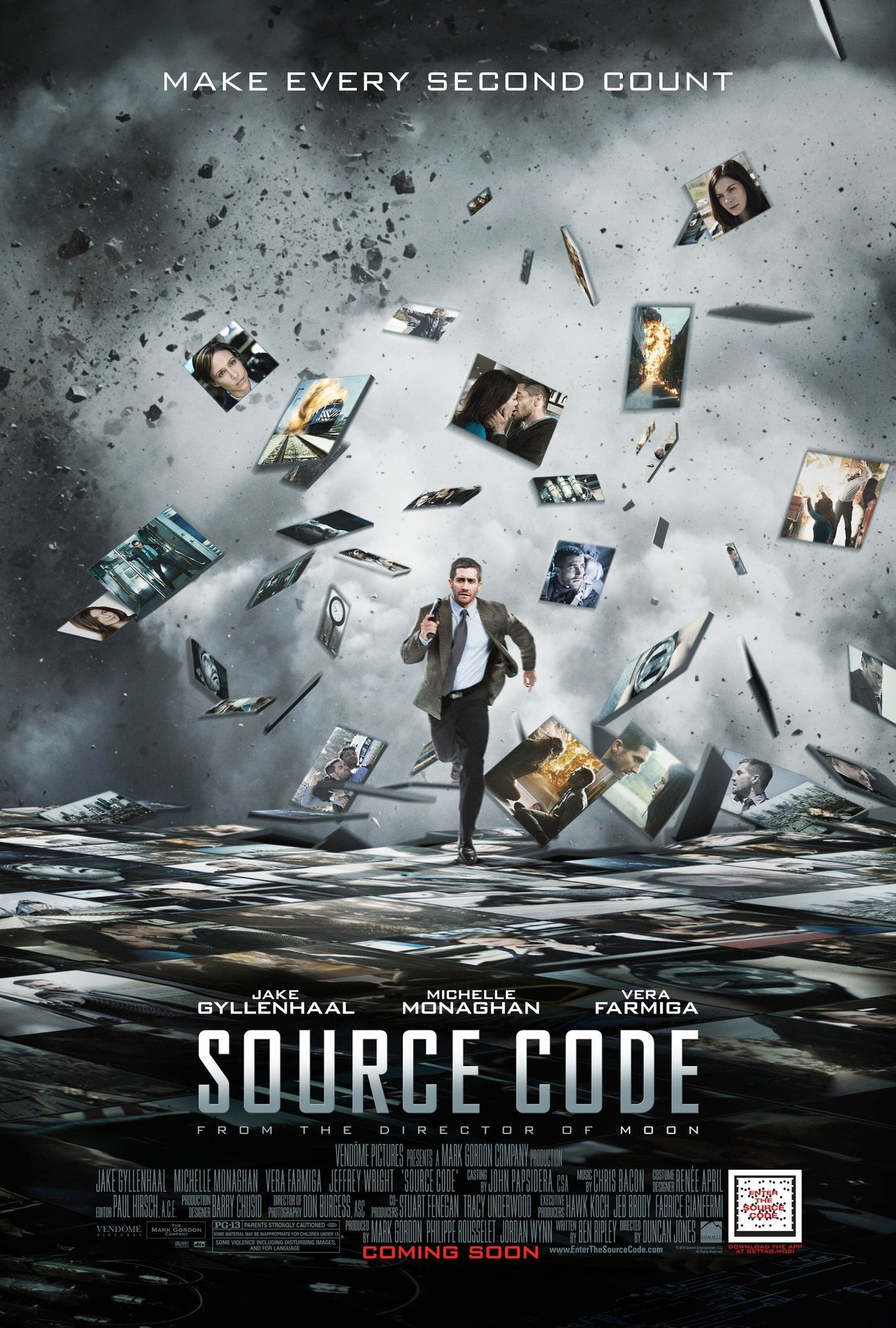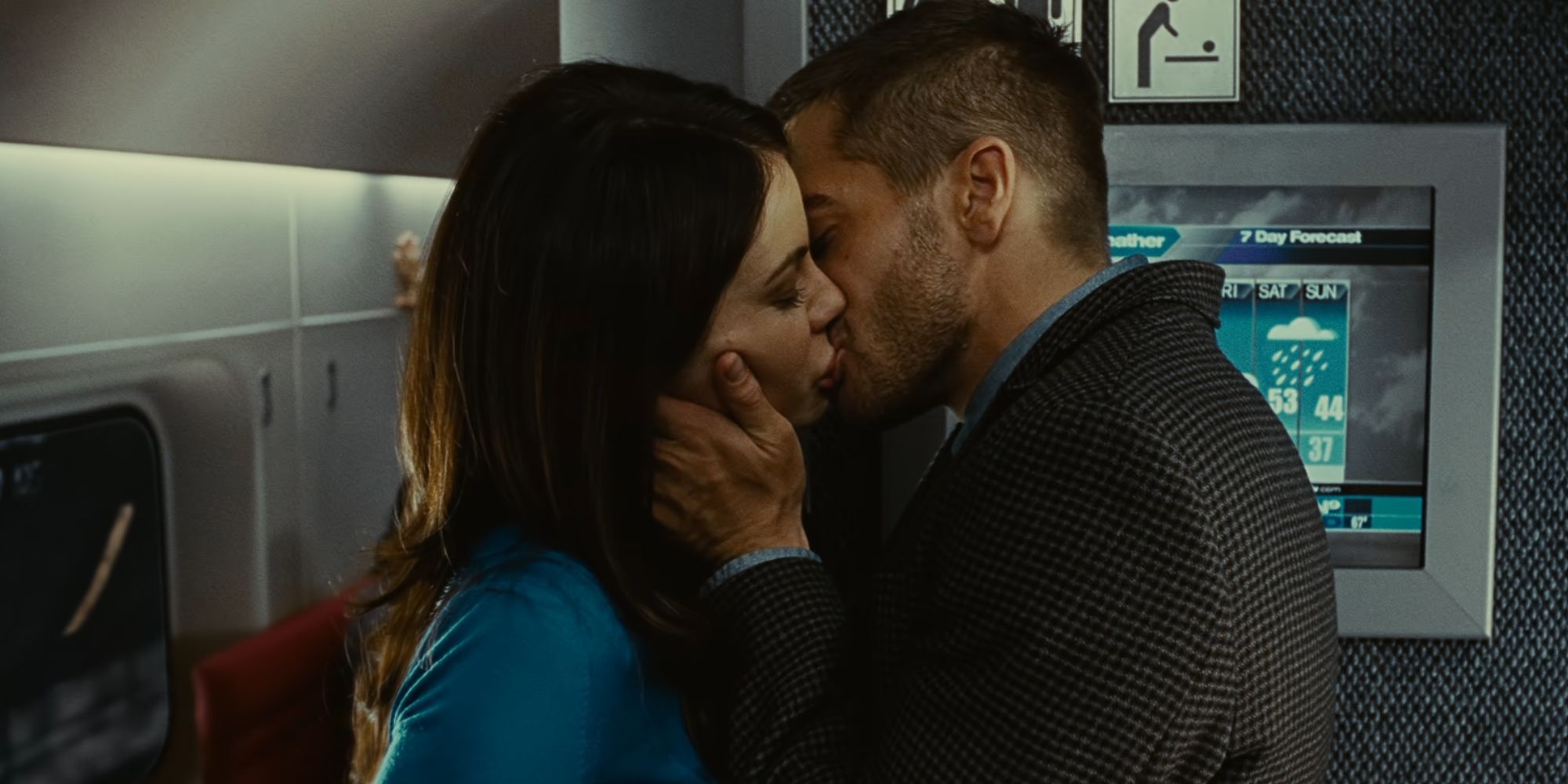This article discusses assisted suicide.
Source Code‘s mind-bending storyline begins under the illusion of leaning on one specific sci-fi trope, but it ultimately turns out to be something entirely different, which can make its ending pretty confusing even though it’s brilliantly executed. While it could be argued to be one of those confusing movies that only make sense right at the end, Source Code falls into a different category, as it prioritizes action under a placeholder explanation. It stands out from many other Jake Gyllenhaal movies for several reasons, but its most appealing aspect is the shocking revelation in its final moments.
Source Code‘s creative spin on time loop movies all starts with Jake Gyllenhaal’s Captain Colter Stevens not knowing he’s essentially dead, with his remains being preserved by the military as they experiment with an advanced program that they believe to be a repeatable simulation. The Source Code Program is intended to thwart terrorist activity by forcing Colter to relive the final eight minutes harvested from the memory of a deceased terrorist attack victim named Sean Fentress. The movie drip-feeds its plot twists throughout its 90-minute runtime, but it ends with the ground-moving revelation that the “simulations” are actually alternate realities.
Source Code’s Final Moments Confirms The Movie Is A Mini Multiverse Saga
Colter being freed by Goodwin allows his mind to live on in another universe
Source Code makes it very clear throughout the movie that almost everyone involved with the Source Code project, which is run by a unit under the codename of “Beleaguered Castle,” is convinced that the events on the train that Colter is being forced to experience over and over again are nothing more than an incredibly advanced simulation. However, Gyllenhaal’s character starts to doubt this more and more as the movie progresses, as the scenario feels far too real to simply be a digital recreation. Colter’s gut feeling is eventually proven to be true during his final loop.
Colter is still only half-convinced that saving everyone is anything more than catharsis for him, but his removal from life support confirms his unspoken theory.
Offering closure as an explanation, Colter begs Captain Colleen Goodwin (Vera Farmiga) to thrust him back into the train scenario one more time, despite having already gained the necessary intelligence to stop a second (much bigger) Chicago bombing. He also requests that Goodwin end his life at the end of the eight-minute loop after he successfully foils the bomber from destroying the train and detonating a nuclear device in the heart of the city. Colter is still only half-convinced that saving everyone is anything more than catharsis for him, but his removal from life support confirms his unspoken theory.

Related
18 Best Jake Gyllenhaal Movies, Ranked
From Donnie Darko to Ambulance, Jake Gyllenhaal delivers – and the best Jake Gyllenhaal movies are some of the best character acting in cinema.
As Colter suspected, the incredible detail both on and off the train goes way beyond what should be possible for a simulated environment. There’s a simple explanation for this – it isn’t a simulation at all. Instead, each time Colter starts the loop, his actions as Sean cause a new reality to form from that moment onward, and it presumably carries on beyond the eight-minute mark when Colter’s mind is pulled back into his original timeline.
Colter had already been under Beleaguered Castle’s control for two months before the events of the movie.
Given that Colter had already been under Beleaguered Castle’s control for two months before the events of the movie, he may have experienced other, completely different, Source Code loops and experiments, having a hand in creating other parallel realities by intervening. Unfortunately, the existence of mind-wipe tech in the Source Code universe means Gyllenhaal’s character would have no memory of previous missions.
Source Code’s Ending Proves Colter Was Right To Take Every Loop So Seriously
Colter always treats each loop with respect
Colter is, at times, encouraged to act recklessly in the loops to get the information he wants. Goodwin and the others tell him that the people on the train are not real – no matter how palpable they may appear to be. It’s believed that they’re mere echoes of the people they represent and that they exist only to populate the loop’s environment. Thankfully, Colter never treats any of the passengers with any hostility unless he suspects they are connected to the bombings. Source Code‘s ending establishes that this approach was not needlessly compassionate, as they are all real people.
Sadly, even Colter’s best intentions don’t always pan out that well. While he always tries to prioritize the safety of the various versions of Christina Warren (Michelle Monaghan), they die several times in both the train bombing and in situations set in motion by Colter as he tries to save the day. If Colter had followed his handlers’ advice and hurt the passengers to get his answers, he’d be leaving behind realities filled with even more real suffering for which he was directly responsible.
Source Code Pushing The Boundaries Of The Movie’s Rules Is A Brilliant Way To Foreshadow Its Biggest Reveal
Colter tries to bend & break the rules of reliving Sean’s final moments
Colter expends huge amounts of effort exploring the flexibility of the time loop on the train. During these moments, both the audience and Gyllenhaal’s character are still under the impression that what Colter is experiencing is a harmless simulation with no direct impact on the real world. So, the recreated environment built from the short-term memory of a dead teacher should really be quite limited. Source Code uses this intriguing “blind spot” in the movie’s lore to stretch the loop to its breaking point, but the fact that Colter is actually visiting other worlds makes this make sense.
Colter goes to places and does things that Steven never did, so if it were indeed a memory being relived, there would have been huge portions of missing information.
Colter goes to places and does things that Steven never did, so if it were indeed a memory being relived, there would have been huge portions of missing information. The movie teases more and more experimental scenarios, like Colter sending an email within one loop, and getting a direct look at the bomber’s nuclear device in another. While the audience is distracted by the fascinating possibilities of the Source Code program and its supposedly reconstructed moments in time, the movie quietly hints at the fact there is a completely alternative explanation for the train’s realism.
The Movie’s Ending Suggests The Story’s “Main” Colter Won’t Be The Last Version To Be Freed From The Source Code Program
Captain Stevens sets a complex domino effect in motion by emailing Goodwin
Goodwin allowing Colter to die at the exact moment the time loop ends appears to be the exact combination of events required for Gyllenhaal’s consciousness to be permanently transferred into Sean’s body in the universe where he fully thwarts the bomber. Although Colter reaches out to the larger world in some of the previous loops, Source Code never reveals whether those instances were successful, or even had any real impact given the implied rules of what was then being presented as a simulation. However, Source Code does confirm Colter’s external communications were meaningful.
Because of Colter’s success, the version of himself in that universe is never brought into action to stop the bomber, but he is still part of the Source Code program.
Colter manages to send an email to Goodwin in the reality in which he saves the day, detailing the success of the Source Code program and telling Goodwin of their collaboration in stopping the terror attacks. Because of Colter’s success, the version of himself in that universe is never brought into action to stop the bomber, but he is still part of the Source Code program and encased in the high-tech government device. Goodwin is amazed at the revelation that another Colter has entered her reality via Beleaguered Castle’s efforts, and the twist that they are not creating harmless simulations.
Because the two Goodwins are identical, it’s likely she would then allow her iteration of Colter to die – if not immediately, then at least after his next mission, so he can live on in another reality. Once her Colter is transferred into another universe, he can then contact its Goodwin and cause a similar liberation, resulting in another Colter being allowed to die, and so on. Because the movie’s “main” Goodwin initially has no idea of the program’s true nature at the start of Source Code, it’s safe to assume the original Colter is the beginning of this domino effect.
Source: Rotten Tomatoes

Source Code is a sci-fi thriller that stars Jake Gyllenhaal as an Army Captain named Colter Stevens who finds himself stuck in an eight-minute simulated time loop where a train explodes at the end of the timer. Disoriented and waking up in a capsule every time the simulation resets, Colter learns that the explosion was real. He is sent into the scenario repeatedly to discover the truth behind the bombing – but the truth behind the experiment may be even darker than he was prepared for.
- Release Date
-
April 1, 2011
- Runtime
-
93 Minutes
- Director
-
Duncan Jones
- Writers
-
Ben Ripley

